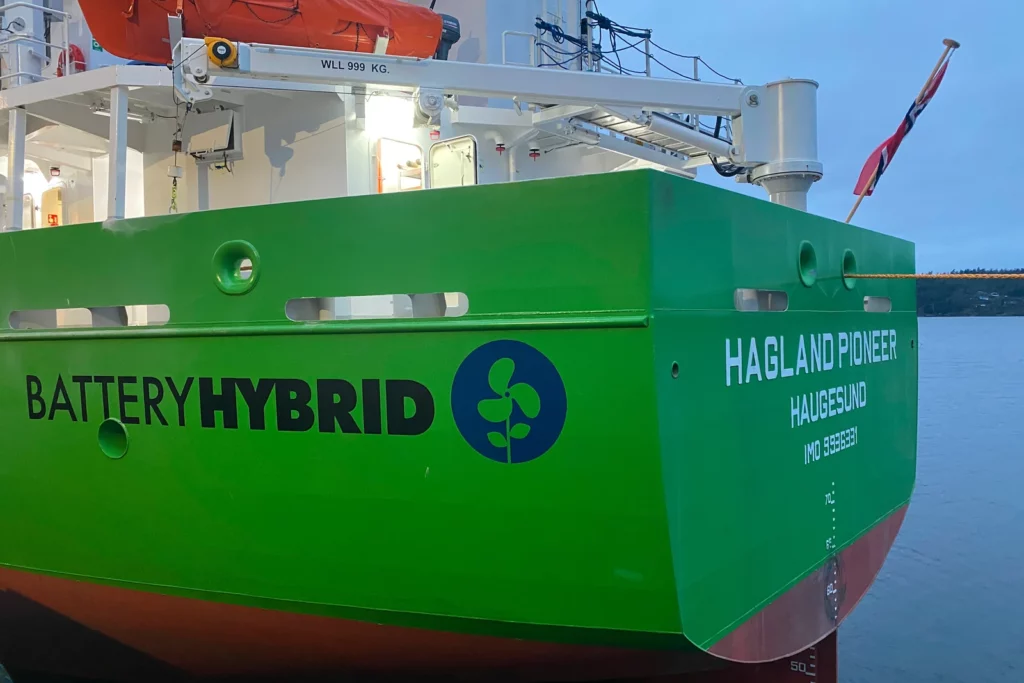In the beginning, during the mid-19th century, primary shipping propulsion began with the renewable energy option – sail power. Then coal power came into use for steam-powered vessels, heavy fuel oil, and finally now with marine diesel oil.
Almost 90% of the total tonnage of the world’s goods is traded by the shipping industry thus playing a critical role in the global economy. International shipping contributes to 9% of the global emissions from the transport sector.
It was also found that around 140 million tonnes of fuel are used for the same annually. An estimated amount of 4-5% of the total Carbon dioxide emissions is created by the shipping industry.
Apart from carbon dioxide emissions other harmful gases such as Sulphur Oxide (SOx) and Nitrogen Oxide (NOx) are also released by the global shipping activity. Shipping contributes to a vast majority of airborne pollution caused over land, especially over coastal areas and ports, globally.
Irena Technology Report On Renewable Energy Options
‘‘Urgent action is needed to accelerate the pace of the global energy transition and the decarbonization of the global economy. International shipping is a key sector of the economy. Indeed, more than 80% of global trade is enabled via ocean-going vessels.
Yet the sector is also one of the most challenging to decarbonize.”, said the IRENA Director-general Francesco La Camera.
The International Renewal Energy Agency (IRENA) has recommended realistic renewable energy solutions, that ensure limited emissions and energy efficiency in the sector.
- Renewable energy technology can be included in ships of all sizes for both primary and hybrid propulsion and, for both on-board and onshore energy use.
- Renewables can be incorporated by adding new technology to the older system through new shipbuilding and design for the existing fleet where a small number of ships are looking forward to achieving 100% renewable energy along with some looking for zero-emissions technology for primary propulsions in the long run.
- Certain technologies implicit instant development opportunities for the shipping sector in terms of renewables.
- Making huge steps into stationing low-carbon fuel infrastructure for shipping could also aid in decarbonizing other sectors.
Thus, The International Maritime Organization has informed its importance to improve energy efficiency in new vessels. This can only be done by producing energy-efficient designs by utilizing renewable energy applications.

Methods To Reduce Conventional Fuel Consumption:
Since the shipping industry is mostly utilized for goods transportation, multiple attempts have been made to reduce fuel consumption in turn limiting emissions, for cargo ships. One such system that has been followed is by limiting the transportation speeds, widening the schedules, and introducing a bulbous bow which helps by reducing the ship’s resistance, creating less fuel consumption by up to 15%.
- Hybrid Marine Power Systems
The main feature of a Hybrid marine power system (HMP) or Hybrid power is that it lowers fuel consumption while being eco-friendly by reducing airborne pollution with no energy compensation. Aquarius MRE is a patented marine power system that is highly progressive.
It uses a combination of solar panels, marine batteries, rigid sails, and energy storage modules. This was developed by Eco Marine Power along with a group of partner companies, aiming to produce renewable power provided by the sun and wind.
It also helps with lowering the operating costs of shipping companies. But the main issue is that the vessels that require the system for vast, cargo ships, are not designed to equip this technology as there is a space limitation due to cargo loading.
- Hydrogen Fuels
It is a guaranteed clean fuel, that only produces water created by the electrolysis of water. This can be carried out via a combustion engine.
Though an expensive investment, it is one of the most careful and viable choices for energy conservation and bio conservation. By 2050, countries like Japan and Norway are aiming to bring down the use of biofuels to 0% by using hydrogen fuels, and have already started investing into this plan.
- Wind Energy
To Harness wind energy, a bulky infrastructure is involved in installing wind power integration systems. This could mean a difficult task for cargo ships which has little to no space left due to cargo loading.
The recent development of Flettner Rotors has opened up the opportunity for cargo ships and other smaller vessels as well. It helps in utilizing wind energy by taking up limited space and still produces a noticeable amount of energy.
These rotors can be controlled by a computer, with no extra input required from the ship’s crew.
A Flettner Rotor or Rotor Sails is a smooth cylindrical structure with disc endplates. A Magnus effect is caused as the air passes right angles across while the structure spins along its long axis. This generates an aerodynamic force, perpendicular to the direction of airflow and the long axis.
The Flettner Rotor has already saved up to 8.2% of the total fuel during the years 2018-2019, as reported by a study. More details about the Magnus effect, construction, and least technologies we fully covered in the article about Rotor Sails.
- Sail Energy
Yet another creation of the Eco Marine Power, is a rigid sail, designed to help ships tap into the power of the wind and the sun.
Simulation on model ships
Concept ships are being monitored to measure their performance by using a series of combinations of possible sustainable energy methods. This is validated with the help of computer-powered simulation and analysis. The power structure consists of the following components:
- Flettner Rotors
- Hydro Turbines, which generate power from flowing water
- Photovoltaic solar panels with a panel efficiency of approximately 21.3%, covering the entire weather deck
- Vertical Axis Turbines performing at reference wind speeds of 3 m/s (minimum windspeed), 12 m/s (nominal windspeed) and 26 m/s (cut off windspeed)
The Cooperation of Shipping and Renewable energy bodies for Global Green Fuel
The International Chamber of Shipping (ICS) which represents an 80% global merchant fleet along with The International Renewable Energy Agency (IRENA) has signed a partnership agreement that aims to achieve an energy sector based on renewables at a global level while also taking care of decarbonization in the maritime sector.
The partnership was made possible at the 12th assembly of IRENA 2022. They announced their decision to provide a framework over the course of the next two years.
This will also be an exceptional project as it helps the shipping industry work along with another 160 countries and territories under the IRENA’s membership, for the implementation of decarbonizing shipping by increasing the use of renewable energy.
The organization plans to conduct a scheduled exchange of information on the behalf of future fuels such as green hydrogen and ammonia along with observing the demand for relevant energy supply in the shipping sector.
What Is The Most Practical And Efficient Renewable Energy Source In Shipping?
A lot more research has to go into the area of renewable energy resources, in order to be able to state the most effective, practical, eco-friendly, conservative, and sustainable options for the shipping industry, especially in the transport system.
With the current environmental crisis that we are facing, we need to be able to find one such renewable energy source that is extremely viable in the technology of maritime transport.
Summary
With the advancement of technology, new practices are being adopted to implement and utilize renewable energy sources in the shipping industry. Once a solid foundation is laid in terms of regulations and what technology to adopt, it will be just a matter of time before which we can see the industry transforming into one which utilizes renewable energy as its backbone.
- Comprehensive Guide to Hold Cleaning for Cargo Ships: Ensuring Maritime Safety and Efficiency – October 19, 2024
- Responsibilities of a Fourth Engineer on Cargo Ships – September 10, 2024
- The Role of Cargo Ships in Global Trade – August 22, 2024




